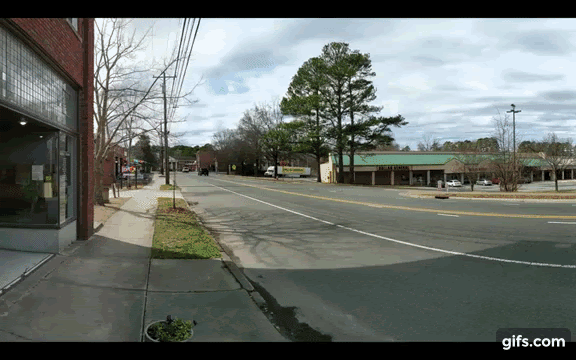Durham’s New Small Area Plans: Potential and Pitfalls
This new tool could strengthen public spaces — or deepen the housing crisis
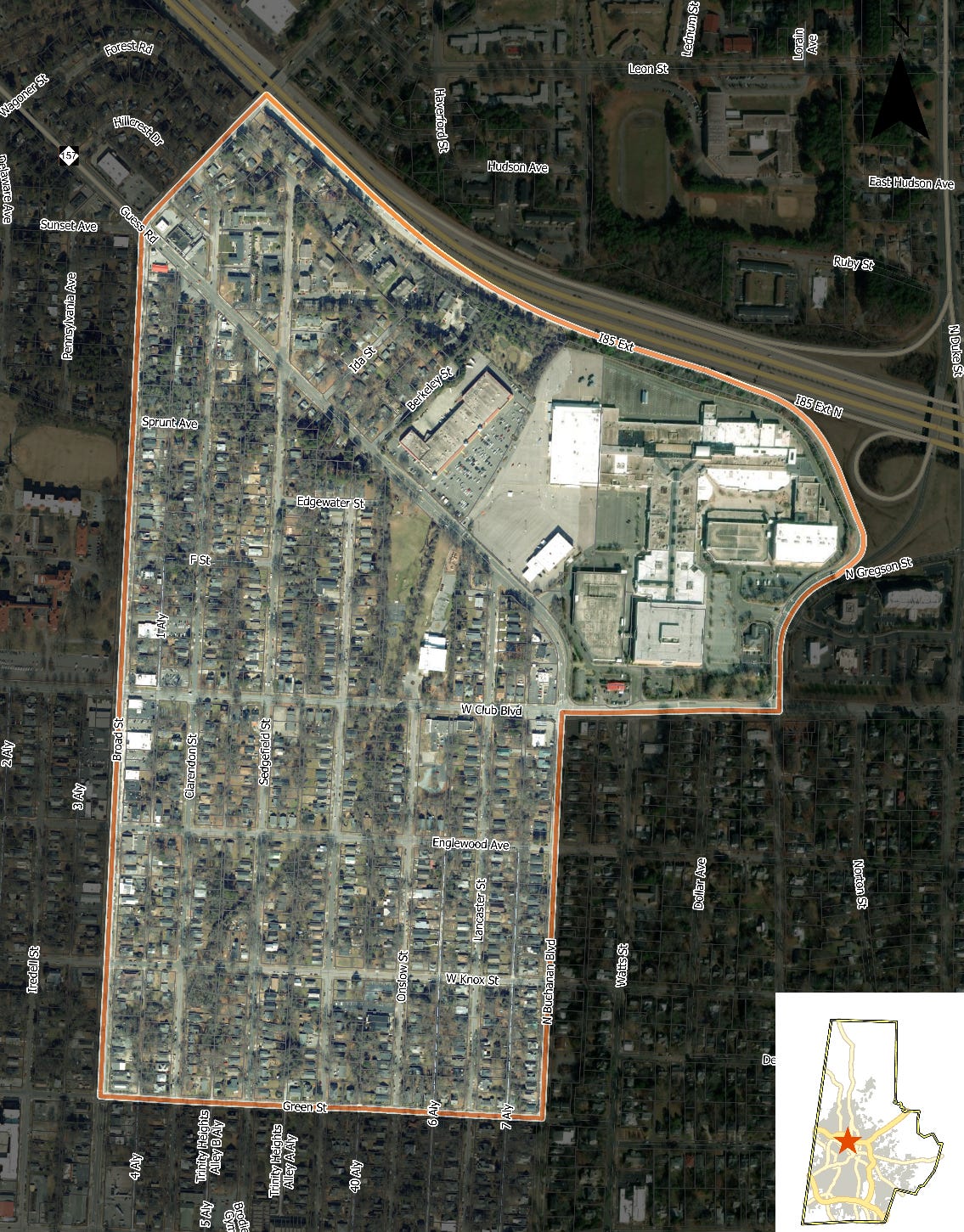
Over the past year, Durham has been rolling out its “Small Area Plans” (SAP) initiative — described by the city as “a way for residents to influence the future planning and development in their neighborhoods.” Just last month, the City Council adopted its first SAP, the Walltown Small Area Plan. Other neighborhoods are clamoring to start their own SAPs — the public engagement process is now underway for Lakewood, West End, and Lyon Park. SAPs aren’t a direct or immediate change to the UDO, but much like the larger Comprehensive Plan, they set the vision for the development of a neighborhood. Neighbors and councilors will judge future rezonings and developments against the SAPs, making them a powerful public instrument.
Neighbors coming together to develop a collective vision for their neighborhood can be meaningful, empowering, and just the kind of citizen-driven, bottom-up action that a community needs. It can also exacerbate the problems Durham faces today, including the high cost of housing. It all depends on how we wield this tool.
When I heard my neighborhood was getting a Small Area Plan, I was skeptical, especially as it relates to zoning. We have a housing shortage, and I believe that every neighborhood has a duty to help alleviate it. This means there will be new housing in my community, and I’m okay with that. In fact, I’m proud that my neighborhood is doing its part.
But if we allow neighborhoods to create special requests to protect their own interests (i.e., restricting housing development to inflate home values), we place a huge burden on other neighborhoods that don’t have the means to organize and develop SAPs. Now, these under-resourced neighborhoods not only have to build enough housing to carry their own weight; they also have to compensate for the neighborhoods that restricted housing. That is wildly inequitable.
It’s no coincidence that the first two SAPs focus on Lakewood Shopping Center and the shuttered Northgate Mall. These plans were likely born out of a desire to dictate what happens at those locations.
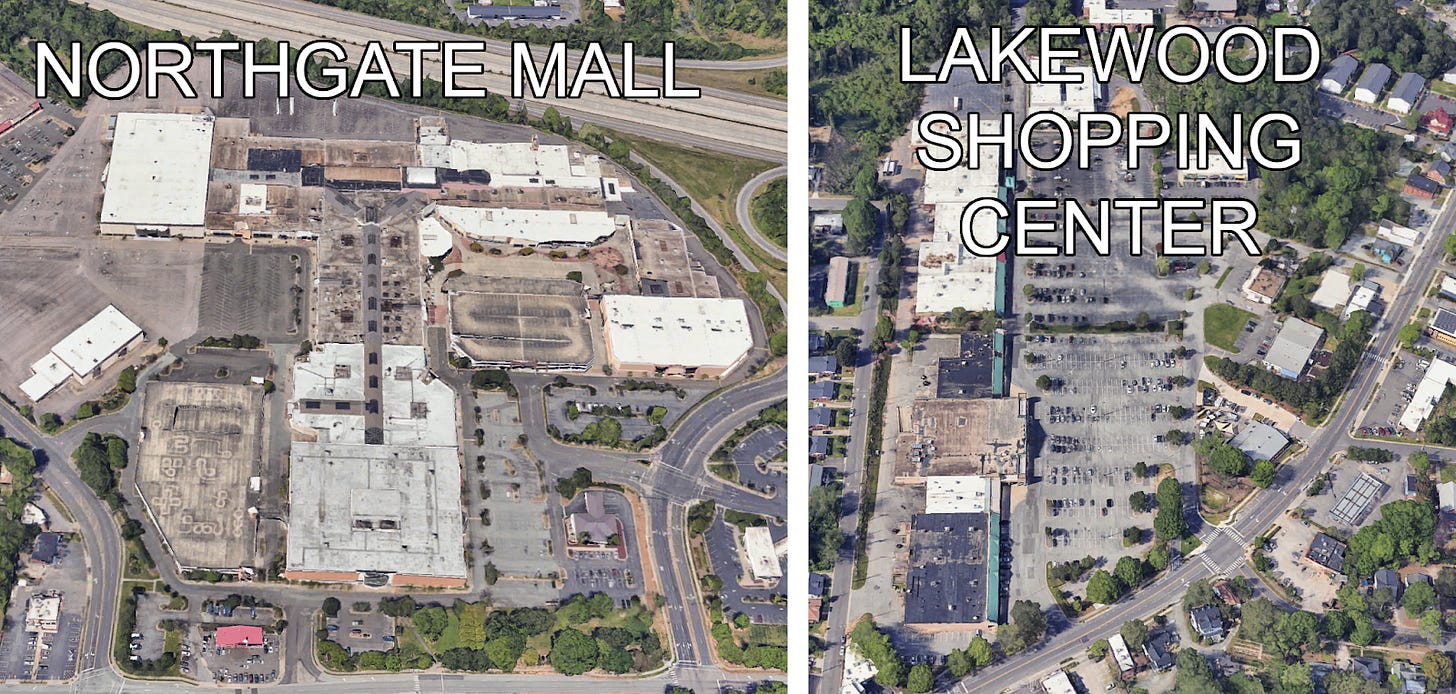
There’s a deeper problem with layering additional requirements onto a development site, which SAPs will likely encourage. We start with the requirements of Durham’s Unified Development Ordinance (UDO) — what can be built on the site and how it can be built. However, we then pile on more requirements that all sound good: affordable housing, affordable retail, large community meeting spaces, specific retail uses, environmental requirements that go above and beyond the UDO, and design/layout specifications. I genuinely support these initiatives, but once all of the additional stipulations are layered on, a project is likely to become infeasible. Ezra Klein refers to this phenomenon as the “Everything Bagel.” If we require everything all at once, nothing is built; we are stuck with the same abandoned storefronts and swaths of empty parking lots that we had before. Change is incremental. Change takes time.
Reading the “How Will This Impact the Neighborhood” section of the city’s initiative, I spotted two bullet points that could lead Small Area Plans to fall into this Everything Bagel trap:
“[SAPs are] a vision from the neighborhood that can be used in making future rezoning decisions.”
“[SAPs are] a reflection of how the community wants to see redevelopment happen.”
However, there is a third bullet point that gives me hope for what Small Area Plans can become:
“[SAPs] help in determining the provision of city services or infrastructure (such as sidewalks, storm water control measures, or bus stop improvements).”
As citizens interested in the way our cities grow, we spend so much time and energy on organizing against developers. We don’t spend nearly enough time creating a vision for the public realm, the spaces that all Durhamites own. To a certain extent, I get it — it’s much more compelling to organize and fight “evil developers.” Taking down an “evil developer” feels righteous, on the “side of good.” We live in a time when outrage is a language understood by all. But what we really need is the incremental work of building our public spaces with small additions like sidewalks that improve life for all of my neighbors.
This is where Small Area Plans cultivate my hope. What if they focus on the communal spaces that we’ve ignored for decades? Picture people gathering in pedestrian-safe streets for block parties or protests. Imagine more local markets, where farmers, crafters, and neighbors with good ideas could set up tables. When we have better public spaces, we use them more. We interact with our neighbors more. We build stronger communities.
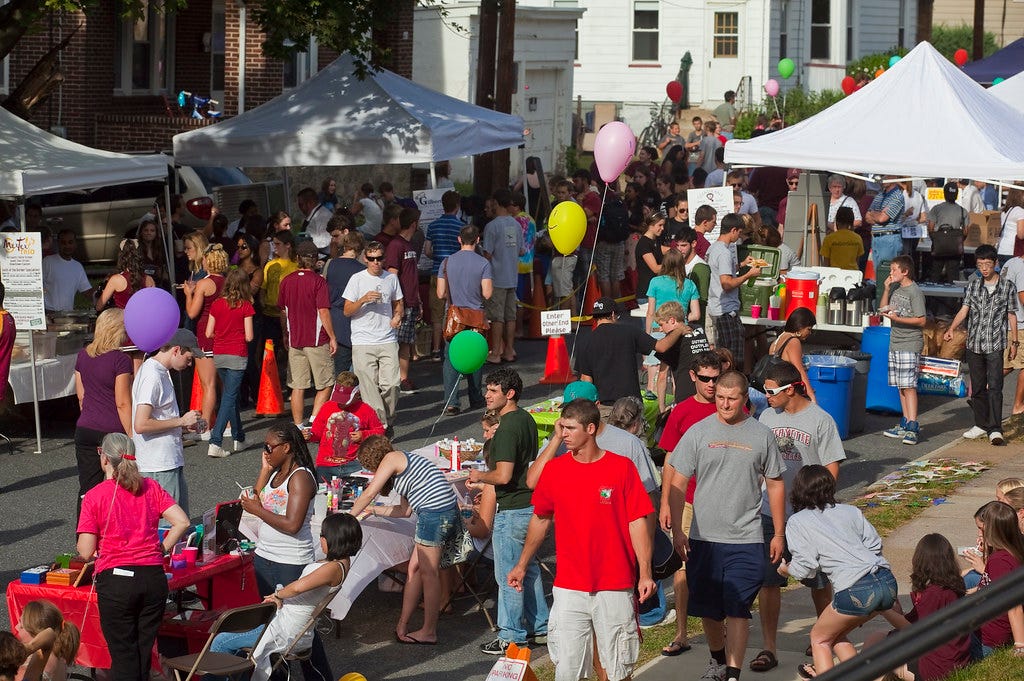
Small Area Plans could encourage sidewalks, tree-lined streets, safe pedestrian crossings at intersections, and public art that creates a unique sense of place. Neighborhood residents across all walks of life should absolutely be empowered to create those realities.
Let’s use the upcoming Lakewood, West End, and Lyon Park SAP as an example. Over the years, many people have had visions for what the Lakewood Shopping Center might become — I’ve had the privilege of seeing a few. Some were better than others, but they all had one element in common: They all turned their backs on Chapel Hill Road, the neighborhood’s main thoroughfare. The buildings and gathering spaces all faced inward toward the center of the development. My initial reaction was always to urge the designer to orient the buildings outward, to welcome the surrounding neighborhood. Chapel Hill Road should have more storefronts like the Cocoa Cinnamon on West Geer Street. What if the streetscape looked more like this:
Over time, I began to ask myself another question. Why are all the designs — good and bad — turning their backs on Chapel Hill Road? If we’re being honest, it’s because Chapel Hill Road isn’t the most appealing street for buildings to face. Due to its design, cars zoom down it much faster than is safe for a walkable commercial corridor. The car lanes are wide. The sidewalks are narrow. What few street trees exist are underwhelming. I love this corridor, but it does no good to overlook its shortcomings — no, not shortcomings, its potential for further improvement!
A Small Area Plan could be the perfect mechanism to address how Chapel Hill Road operates. My neighbors might disagree with my view that the short walk signal at Lakewood and Chapel Hill Road makes crossing the street a stressful game of Frogger, but that’s okay, not all opinions need to be in accord. Gathering input and coming up with an SAP for Chapel Hill Road and other public spaces — one that is created by the community — would be beautiful.
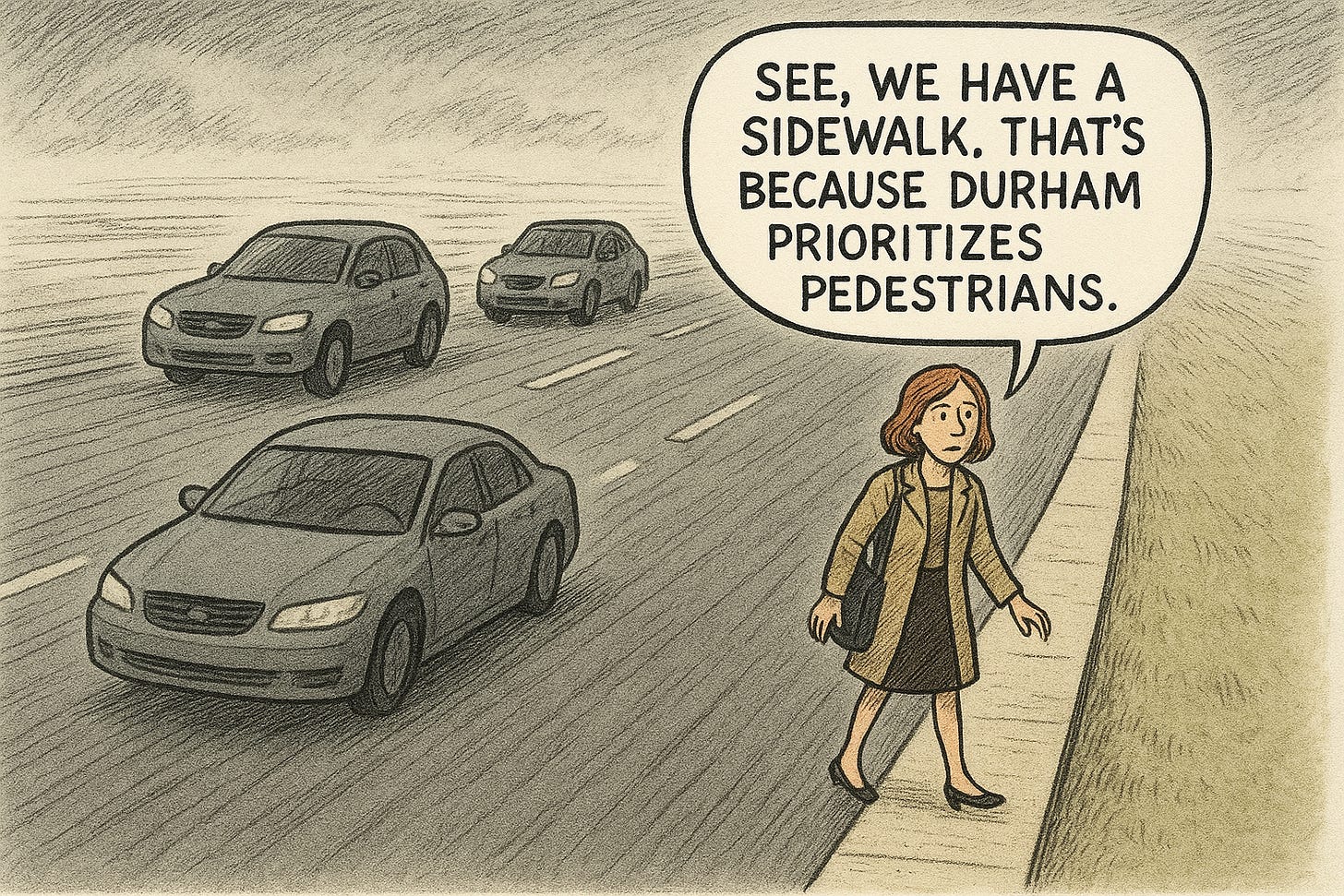
Small Area Plans have the potential to make an incredible impact on communities, but they must be wielded with responsibility and caution. Even a focus on public spaces calls for careful implementation. If we wield this tool only to demand that private developers fix the public realm for us, the outcome is predictable — we’ve already seen it. Projects will die before they begin, and the few that survive will leave us with more of the same: sidewalks that end abruptly and street trees that wither without care. Small Area Plans should reflect what we as citizens want the government to do with our tax dollars to improve our neighborhoods — without stifling new housing or deepening inequities. The public realm is ours, all of ours. Ours to envision. Ours to create. Ours to maintain. And ours to enjoy. I’m hopeful that we can wield this new tool well.
Dave Olverson is an incremental developer and zoning advocate in Durham, NC. He has an econ undergrad degree from Duke and a planning degree from the University of North Carolina. In 2021, he got his GC license and works specifically on infill projects in Durham.


